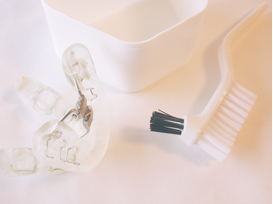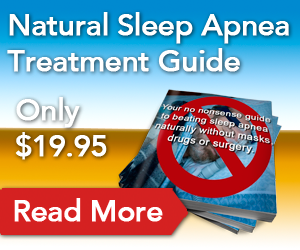No Mask Sleep Apnea Treatment options
Sleep apnea is a common problem and many people are looking for no mask sleep apnea treatments. There are several sleep apnea treatment options available in addition to CPAP machines and we are going to discuss some of them here.
Sleep Apnea exercise programs.
Exercise programs for sleep apnea are designed to raise the tone in the muscles in the throat and jaw. In sleep apnea these muscles collapse as their tone decreases upon sleep. By exercising them you increase their tone, thereby helping to keep the airway open. There have been scientific studies that have shown that these types of exercises can be helpful in treating sleep apnea. More details about sleep apnea exercises can be found by clicking here.
Sleep Apnea Mouthguard devices.
Dental sleep apnea devices are made of plastic like a mouthguard and fit inside the mouth or go around the head and chin. Both are designed to bring the jaw or the tongue forward so that they don’t fall backward and block your airways. They can be effective, especially for mild to moderate sleep apnea. Some people have reported side effects such as teeth problems, pain, saliva build up and jaw problems follow their use. They really need to be fitted by a dentist and monitored for any negative side effects.
Nasal Strips.
Another no mask sleep apnea treatment is strips that are applied to the outside of the nose to keep the nasal passages open. These may be effective for people who have difficulties with the airways in the nose, but I have difficultly seeing how they can be effective for the muscle laxity that cause most obstructive sleep apnea.

Mouthguard device for sleep apnea treatment
Sleep Apnea Pillows.
There are several pillows available on the market that are aimed at treating snoring, but some also are supposed to affect sleep apnea as well. Some of them act to keep you lying on your side so that your tongue and jaw don’t fall backward. Others support the neck to keep it extended thus helping to keep the airways open. Others wrap around the neck, pushing the jaw up to have a similar effect. These are unlikely to cure sleep apnea in of themselves, but may help as part of a complete treatment program.
Weight loss.
If you are overweight, weight loss is an important part of the treatment of sleep apnea. There is also a Catch 22 whereby the insulin resistance caused by sleep apnea can make it harder to shift the weight. Undertaking a graduated exercise program in consultation with your healthcare practitioner is a great way to get started. It doesn’t have to be too strenuous; in fact I would encourage you to take it easy at the start.
As well as exercise, dietary modification is necessary for weight loss. Some diets like high protein diets can be very effective at rapidly shedding the pounds, but they need to be monitored in the long term. Click here for a program designed by nutritionists tailored specifically for weight loss in sleep apnea.
By addressing these options you may be able to avoid the CPAP machine and just use no mask sleep apnea treatment options. Ensure you always discuss any treatment with your physician.


